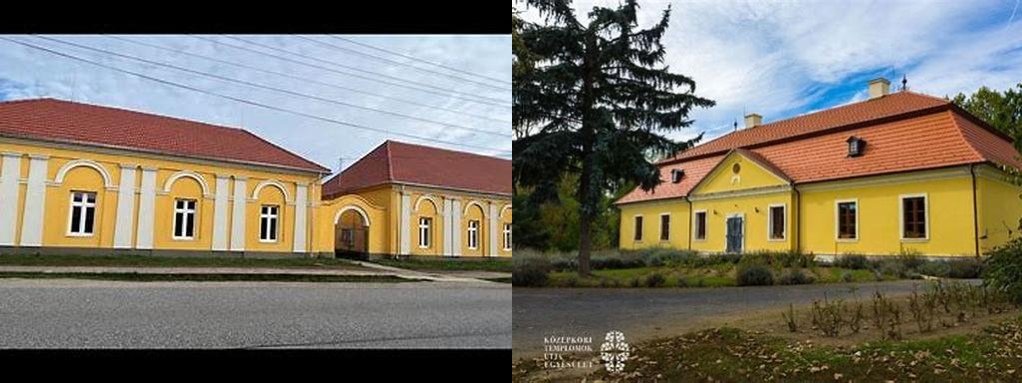
Vay-kúria in Alsózsolca is not one of those monumental palatial estates that immediately dominate the skyline or crowd the pages of glossy coffee-table books. Instead, this stately home feels like something from a half-remembered dream: nestled in an emerald web of old trees, quietly weathering the passing centuries, and holding, if you pause to listen, stories layered as richly as any castle or grand residence. If you find yourself wandering through Borsod-Abaúj-Zemplén County, near the eastern veins of the country, consider making a detour; you might find beauty in subtlety, and history humming beneath humble facades.
Constructed between the end of the 18th century and the dawn of the 19th century, the Vay Mansion has watched over both the village and the gently rolling landscape for more than two hundred years. It was commissioned by the prestigious and once-influential Vay family, whose traces are woven through every stone and cornice. Compared to the more ostentatious Hungarian manors of the era, the Vay Mansion is restrained—its elongated, single-story facade is adorned with artisanal wrought-iron elements and crowned by a hipped roof. The approach is deliberately understated, almost blending into the landscape, but perhaps this is its secret: you’re not visiting to be dazzled or overwhelmed, but to be initiated. The architecture reflects a balance between simple rural life and the discreet luxury enjoyed by nobility, and it manages, even now, to nod both to the old world and the possibility of intimacy with time.
Walking beneath the archways and among the carefully planned gardens, it’s easy to imagine how the estate functioned as the social and economic nucleus of Alsózsolca in its heyday. The Vay family—particularly Miklós Vay, a notable figure in regional politics—were not only landowners but also pivotal influencers in county affairs. In fact, the mansion’s very existence is testament to the way local nobility worked to shape their corner of Hungary; it was constructed both as a private residence and as a symbol of continuity for the region during times of change. Sit for a moment on a garden bench and you can almost catch the echo of excited conversations from balls, critical decisions dictated from study tables, or disputes over the future of the estate’s agricultural lands.
Every room in the Vay-kúria hints at the lives that passed through its halls, but perhaps its most gripping stories date from the 20th century, when fortunes—and the broader fate of the region—shifted. World War II and subsequent tumultuous decades affected families like the Vays with particular severity, and the mansion, too, was repurposed repeatedly: used for official functions, briefly an orphanage, at intervals left to the mercy of disrepair. You quickly realize that these walls aren’t mere historic decoration; they’re repositories of sorrow and joy, documents of ambition, compromise, and adaptation. Some of the original interiors survive, and others have welcomed willful restoration—or creative appropriation, as local crafts and exhibitions put their own mark on the estate’s story.
One particularly poignant piece of the Vay-kúria tale is its relationship to the town of Alsózsolca itself. While the community around it has changed—industries have come and gone, families have dispersed and returned—the mansion endures as a kind of bookend to the lives lived nearby. In visiting, you’re not just stepping into a locked-off chapter of the past. You’re aligning yourself with generations who saw the manor rise, thrive, falter, and revive. In a sense, the mansion forms a bridge between eras, its understated poise offering a gentle invitation to reflect on continuity, memory, and transformation.
Whether you’re a fan of history, architecture, or just fond of wandering places where the boundary between “now” and “then” is paper-thin, the Vay-kúria offers an irresistible space for contemplation. The grounds themselves are a delight for slow exploration: giant chestnut trees, fragments of old garden design, and the ever-present birdsong enfold the mansion in a peaceful, timeless atmosphere. If you’re attentive, you might spot details that hint at past grandeur—a stylized crest, fading frescoes, or the careful handiwork on a shutter or gate—all evidence of people long gone but not quite forgotten.
In the end, a visit to the Vay Mansion is much less about spectacle and much more about paying attention: to the nuances of a hidden story, the evidence of endurance, and the unapologetic beauty of places shaped by time and care. Allow yourself a slower pace here; it’s the perfect antidote to museum fatigue and architectural overload. Here, in Alsózsolca, the past stretches out its hand, not in grand, dramatic gestures, but in the simple, steady pulse of a manor that’s still alive with memory.





